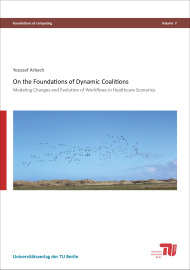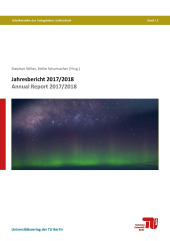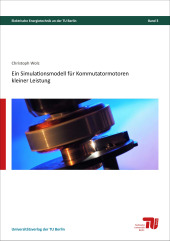On the Foundations of dynamic coalitions
modeling changes and evolution of workflows in healthcare scenarios

Format: 14,8 x 21,0 cm
Publishing year: 2016
Dynamic Coalitions denote a temporary collaboration between different entities to achieve a common goal. A key feature that distinguishes Dynamic Coalitions from static coalitions is Dynamic Membership, where new members can join and others can leave after a coalition is set. This thesis studies workflows in Dynamic Coalitions, by analyzing their features, highlighting their unique characteristics and similarities to other workflows, and investigating their relation with Dynamic Membership. For this purpose, we use the formal model of Event Structures and extend it to faithfully model scenarios taken as use cases from healthcare. Event Structures allow for workflows modeling in general, and for modeling Dynamic Membership in Dynamic Coalitions as well through capturing the join and leave events of members. To this end, we first extend Event Structures with Dynamic Causality to address the dynamic nature of DCs. Dynamic Causality allows some events to change the causal dependencies of other events in a structure. Then, we study the expressive power of the resulting Event Structures and show that they contribute only to a specific kind of changes in workflows, namely the pre-planned changes. Second, we present Evolving Structures in order to support ad-hoc and unforeseen changes in workflows, as required by the use cases. Evolving Structures connect different Event Structures with an evolution relation which allows for changing an Event Structure during a system run. We consider different approaches to model evolution and study their equivalences. Furthermore, we show that the history of a workflow should be preserved in our case of evolution in Dynamic Coalitions, and we allow for extracting changes from an evolution to support Process Learning. Third, to capture the goals of DCs, we equip Evolving Structures with constraints concerning the reachability of a set of events that represents a goal. The former extensions allow for examining the changes and evolutions caused by members, and examining members’ contributions to goal satisfaction, through their join and leave events. Finally, we highlight many modeling features posed as requirements by the domain of our Dynamic-Coalition use cases, namely the healthcare, which are independent from the nature of Dynamic Coalitions, e.g. timing. We examine the literature of Event Structures for supporting such features, and we identify that the notion of Priority is missing in Event Structures. To this end, we add Priority to various kinds of Event Structures from the literature. Furthermore, we study the relation between priority on one side, and conjunctive causality, disjunctive causality, causal ambiguity and various kinds of conflict on the other side. Comparing to Adaptive Workflows, which are concerned with evolutions of workflows that occur as a response to changes, e.g. changes in the business environment or exceptions, this thesis shows that Dynamic-Coalition workflows are not only Adaptive but also Goal-Oriented. Besides, it adds one extra trigger for evolution in workflows—unique to Dynamic Coalitions—namely the join of new members who contribute to goal satisfaction in a Dynamic Coalition. Finally the thesis contributes to bridging the gap in modeling between theory and domain experts by supporting step-by-step modeling applied regularly in healthcare and other domains.



